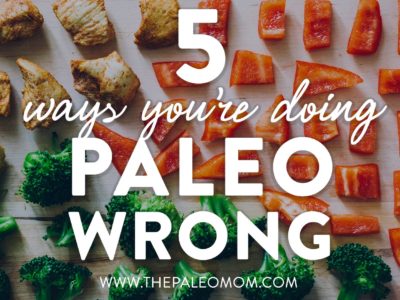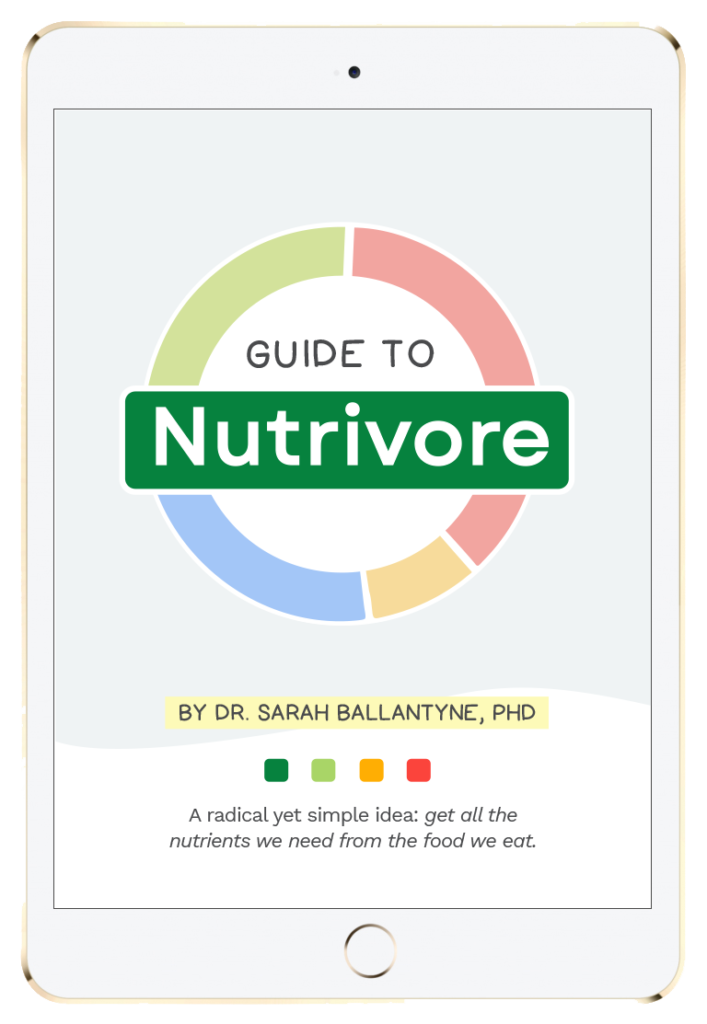The Paleo Diet is a powerful tool for healing, weight loss and overall health. When it’s done right, it can lead to incredible health improvements and positive lifestyle shifts. But how do you know if you’re doing it right? If you’ve been following Paleo for a while and aren’t seeing results, you might be making one of these 5 key mistakes.
1. You’re staying as low-carb as you can
For those of us who lived through the low-fat crazed 1980’s, Paleo’s acceptance of fat can seem like a breath of fresh air. Fat from pasture-raised animals and plants like avocados, coconuts, olives and palm are nutrient-dense and healthy, and absolutely essential to our bodies. And even though many Paleo enthusiasts might not want to hear it, carbohydrates are too.
If you’re avoiding this macronutrient because you think it causes insulin sensitivity, weight gain or even cardiovascular problems, you may be doing more harm than good. I’ve written aboutthe danger of ketogenic diets and whether or not high intake of fat is healthy (see Saturated Fat: Healthful, Harmful, or Somewhere In Between?), and the bottom line is that I only advise high-fat, low-carbohydrate diets when it’s a necessary medical intervention, say in the case of neurological problems. Our bodies require the substrate found in carbohydrate for healthy hormone production, energy and even weight regulation.
Even though Paleo excludes grains, there are plenty of healthy sources of carbohydrate included on this diet. Check out the side dishes section of my site for more ideas!
2. Your diet is mostly “Paleo-fied” treats
A cursory Google search will probably give you a great recipe for a Paleo version of your favorite food. But if you’re spending time (and money) making Paleo treats, breads or replacements for your Standard American Diet favorites, there is no way you’re eating the density of nutrients you need for optimum health. I love a good Paleo Chocolate Chip Cookie as much as the next girl, but they don’t make up a bulk of my diet or even a weekly treat. The ingredients in these treats are often nut flours, Paleo sweeteners and some sort of binders, and while they aren’t as damaging as wheat flour and white sugar, they aren’t healthful in comparison with less processed foods.
Instead, I focus on making ¾ of my plate vegetables. Shoot for 9 or more servings of veggies per day (although 5 is a good place to start!), and fill the rest of your plate with protein and healthy fat. Veggies in particular contain the vitamins, minerals, phytochemicals and fiber that make Paleo such a healing diet (see The Amazing World of Plant Phytochemicals: Why a diet rich in veggies is so important! and The Fiber Manifesto–Part 1 of 5: What Is Fiber and Why Is it Good?). Save the treats for a special occasion and be sure to indulge without guilt!
3. Your plate is mostly made up of protein (…and bacon)
This one goes right along with #2 — on the Paleo diet, vegetables should be king! You might be saying “wait, wait…isn’t Paleo a meat-heavy diet?” Nope! In fact, I think Paleo has quite a bit more in common with “plant-based” ways of eating than low-carb diets like Atkins (see The Diet We’re Meant to Eat, Part 3: How Much Meat versus Veggies?).
Well-sourced protein, eggs, healthy fats and fish definitely have a place in this diet, and protein is absolutely crucial to muscle synthesis and overall health. But aiming to make vegetables the bulk of your diet will maximize your diet’s potential. Research shows that a variety of fruit and vegetable matter is crucial to healthy gut flora balance, which in turn may affect everything from mental health to digestion. Conversely, high intake of saturated fat might have a detrimental effect on gut flora populations. Vegetables are also the most nutrient-dense foods on the Paleo diet, chock-full of vitamins, minerals and phytochemicals to help us feel our best.
So you see, balance is key. Check out the hashtag #threequartersveggies on Instagram for more ideas on how to include veggies in your diet!
4. You’re “strict Paleo”
Do you think that “Paleo-ing harder” is the answer to all your questions? Many people have to follow strict approaches, like the Autoimmune Protocol or a Low-FODMAPS diet, in order to manage health conditions in addition to Paleo. But others don’t explore “gray areas”like grassfed dairy, legumes or sugar simply because they’re afraid they will derail their progress.
Only you know your own tendencies. However, many people have more success following a diet like Paleo when they allow occasional treats, such as celebrating special occasions with special foods. This makes sense from a psychological standpoint — no matter how good you feel when eating a particular way, if we feel restricted we are more likely to fall off the wagon and binge.
I recommend a period of strict elimination, followed by reintroduction according to your particular preferences and tolerances. That way, you may have an idea of what “cheats” will allow you to maintain your sanity without sacrificing your health!
Nutrivore Weekly Serving Matrix
An easy-to-use and flexible weekly checklist
to help you maximize nutrient-density.
The Weekly Serving Matrix is very helpful! I’ve been eating along these lines but this really helps me know where to focus vs. which foods serve a more secondary role. It’s super helpful and has taken a lot of worry out of my meal planning. Thanks!
Jan
5. It’s all about the food
Paleo is about so much more than the food that you eat — it’s truly a lifestyle, and one that can positively impact the way you sleep, move and even interact with your loved ones. If you’re only focused on eating a clean diet, you’re missing out on some amazing opportunities to improve your life! One incredibly important area of focus is sleep. Research indicates that short sleep (less than 6 hours per night) and disrupted sleep are more detrimental than any other health factor in terms of disease risk. If you want to improve your sleep, check out my 14-Day sleep rehab program, Go To Bed. Once our diet is on track, we should begin to pay attention to to movement and connection as well. Likewise, prioritizing stress management may be one of the most important things we can do to improve our overall quality of life. Getting our Paleo lifestyle ducks in a row is just as important as improving what we eat!






 New Scientific Study: Calories Matter
New Scientific Study: Calories Matter